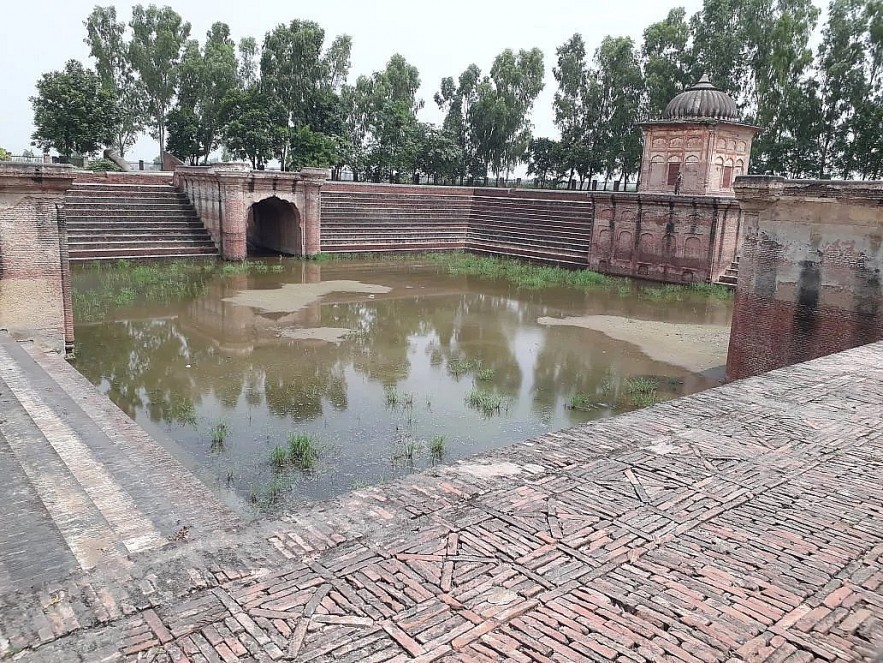The Legend of Pul Moran: A Symbol of Love in Punjab
 |
As the legend goes… Moran was a Muslim ‘nautch’ girl hailing from Kashmir who lived in a small, relatively unknown village called Makhanpur between Amritsar and Lahore. Ranjit Singh apparently had seen a performance by her at the royal “Baradari’ in Dhanoa Kalan Village and was immediately besotted with her and given the name ‘Moran’, meaning a peacock in Punjabi, for her graceful dance moves.
There are quite a few lores around the two Lovers; it is said that Maharaja Ranjit Singh was completely taken over by Moran’s beauty and used to shower endless gifts on her. As the story goes, one day as Moran was going for her dance performance to the ‘Baradari’ (pavilion where performances took place), she lost her silver slipper, gifted by the Maharaja, in the canal. She was so dismayed. at the loss that she refused to dance that evening and Ranjit Singh was distressed by his beloved’s upheaval so he ordered that a bridge immediately be built across the canal for her convenience. Thus, the Taj Mahal of Punjab, or ‘Pul Kanjari” was constructed.
Delving a little deeper into history, it is said that the Maharaja frequently travelled between Amritsar and Lahore so he had built a rest house (Baradari) about 35 km from Amritsar, close to the Wagah border. Moran, who was his favourite dancer, was sent for on such occasions for his entertainment. Since the bridge had been constructed for Moran, the locals started calling it ‘Pul Kanjari’, a derogatory term used for a dancer! Later on, it was agreed upon to change its name to ‘Pul Moran’ because Maharaja subsequently married Moran which technically converted her from being his concubine to a queen.
Apart from the bridge, Ranjit Singh also made a ‘Sarovar’ (water tank), a Gurudwara, a Mosque, and a Shiva temple on the same premises. It can be easily concluded that although Ranjit Singh’s love compelled him to marry Moran, it was also an egalitarian decision to assert the equality of all people, religions, and castes. However, their wedding was a big affair, with great fanfare in 1802 at a ‘haveli’ in Amritsar. After the wedding, the couple settled in Lahore where Moran had her own ‘haveli’ constructed especially for her by her doting husband in the ‘Papar Mandi’ area inside Lahore’s Shah Aalmi Gate.
Interestingly, it is said that Moran was a close confidante and adviser to the Maharaja. She must have possessed impressive administrative acumen to have been in that position. She proved her mettle repeatedly and set up her court in the ‘haveli’ where she listened to the grievances of the commoners and soon, she was given the title of ‘Moran Sarkar’ by the locals. On her request, Maharaja also constructed a mosque close to her haveli – now called “Jamia Masjid Tarro Moran’. ‘Tarro’ is a Persian word meaning ‘revolving’. Moran’s earlier dancing fame had been numerous fast rotations, hence, the name.
She is also accredited for building the Shivala temple in the Lahore Fort and a ‘Madrasa’ in 1823. Maharaja Ranjit Singh also got a series of coins minted between 1802 and 1827 called the ‘Moranshahi’. These coins had a peacock feather inscribed on them symbolizing his favourite wife.
The legacy of Moran is varied and means different things to different people. While some assign her ungracious names like ‘kanjari’ and ‘tawaif’ due to her profession as a dancer, there are others who consider her a generous queen worthy of respect and reverence.
Hence, it can be concluded by saying that Sikhs are as much remembered for their bravery and valour as they are for their love. The saga of Maharaja Ranjit Singh and Moran is a story of adoration and commitment. ‘Pul Moran’ is a testament to this undying love.
Recommended
 World
World
Trump’s Tariff Pause: A Strategic Move from “The Art of the Deal”?
 World
World
"Indian Navy's participation in AIKEYME exercise matter of great happiness": Admiral Dinesh Kumar Tripathi
 World
World
ASEAN and US Tariff Dilemma: Hybrid Approach to Global Trade Tensions
 World
World
Vietnam Affirms Its Active and Responsible Role at UNESCO
 World
World
US Imposes 125% Tariff on China, Pauses Tariffs for 90 Days on Over 75 Countries
 World
World
"Massive financial deficits with China, EU can only be cured with tariffs": Donald Trump
 World
World
Modi’s Sri Lanka Visit: A Diplomatic Triumph Amid Regional Tensions
 World
World
